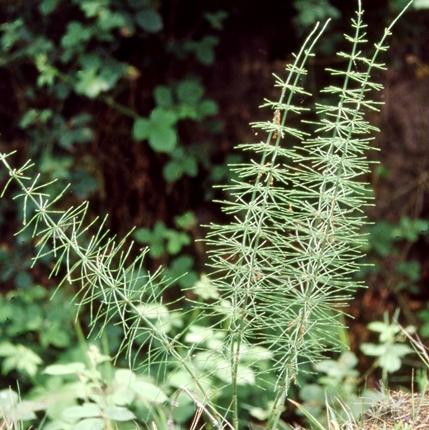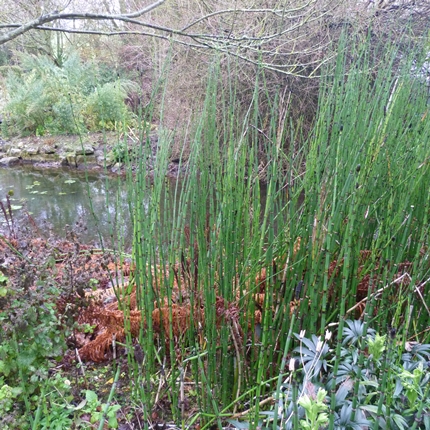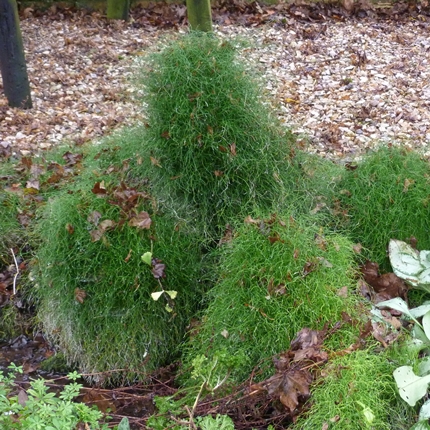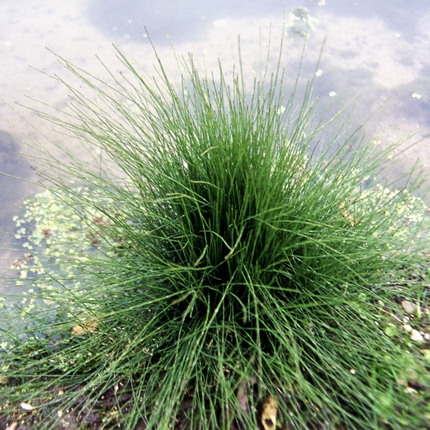Equisetum Although not true ferns, the Equisetums, or horsetails, were once considered to be relatives of ferns, and have a similar romantic history. In my youth the Victorian classification of Equisetums as fern relatives, was generally rejected by botanists; they are however now, following modern DNA analysis, once more considered by many to be closely allied to ferns or even included within them. E. scirpoides and E. variegata, listed here, are good garden plants, but the gardener is advised to be wary, as nearly all Equisetums are to some degree invasive.
|

|
Equisetum hymale and E. japonicum. (E) Hight 150cm or more. Spreading habit.
These are two very large horsetails often sold as pond or wetland plants. Both are highly invasive. And they should not to my mind be sold without a warning, though they often are. It is easy to see why the should be thought attractive, as they have a bold bamboo like form with bright evergreen stems and prominent coloured nodes, but the buyer must beware of their spreading habits.
|

|
Equisetum scirpoides (E) dwarf horsetail Hight 40cm. Spreading habit.
E. scirpoides is a spreading plant, which forms cushion like clumps, which often have a charming form, very like a guardsman's bearskin. However, it is not deep-rooted or difficult to remove if it spreads where it is not wanted. and should not need to be confined in a container. There is a twisted leaved form which looks somewhat like the corkscrew rush. |

|
Equisetum variegata (E) variegated horsetail Hight 50cm. Spreading habit.
A good plant for the waterside, like a fine evergreen rush, with black and white nodes along each stem. Despite being a horsetail it spreads slowly and is shallow rooted, so can be easily removed if necessary. Although it prefers moisture, it will grow in ordinary garden soil, but not as tall as it does close to water. |

|
|